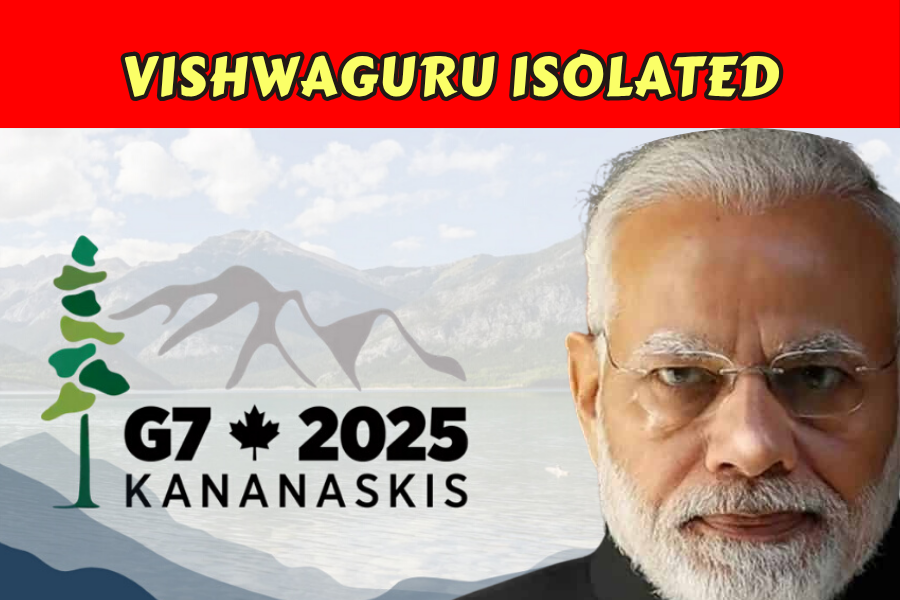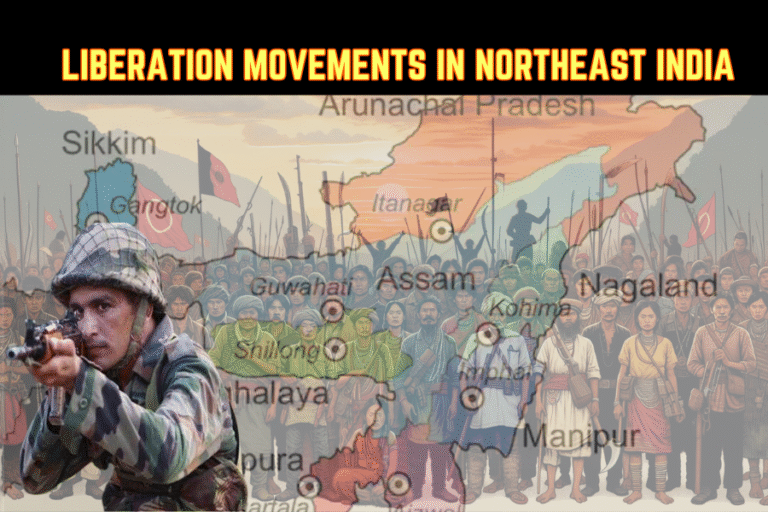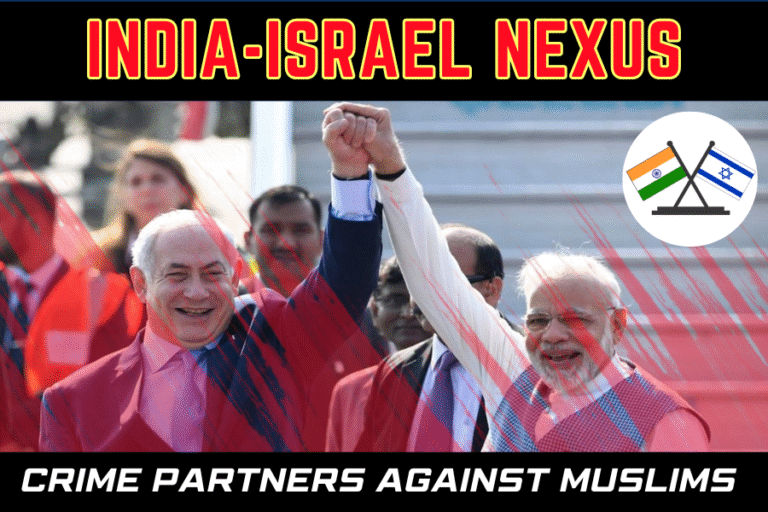(By Khalid Masood)
In the wake of the brief but bruising Indo-Pak war of May 7–15, 2025, India finds itself grappling with an unaccustomed diplomatic isolation. The conflict, sparked by the April 22, 2025, Pahalgam attack that killed 26 tourists, saw India’s Operation Sindoor—a retaliatory strike against alleged terrorist sites in Pakistan—fail to achieve its strategic objectives. Prime Minister Narendra Modi’s subsequent absence from the G7 summit in Canada, scheduled for June 15–17, 2025, marks a stark departure from his regular attendance since 2019, signaling a profound shift in India’s global standing. As Canada hesitates to extend an invitation, citing Sikh community demands and strained bilateral ties over Khalistan-related allegations, Modi’s government faces a reckoning. This article explores the roots of India’s isolation, the fallout from the 2025 war, and the global reassessment of New Delhi’s ambitions.
1. The Pahalgam Trigger and Operation Sindoor’s Misstep
The Pahalgam attack, a militant assault in Indian-administered Jammu and Kashmir, killed 26, including foreign nationals, prompting India to file an FIR within 15 minutes, blaming Pakistan-based Jaish-e-Mohammed (JeM) (The Hindu, Apr 23, 2025). Yet, the absence of medical aid for nearly an hour and intelligence failures—despite 500,000 troops in Kashmir—undermined India’s narrative (India Today, Apr 24, 2025). Operation Sindoor, launched May 7, targeted nine sites in Pakistan with Rafale jets and SCALP-EG missiles, claiming to neutralize 100–140 terrorists (Times of India, May 7, 2025). Pakistan’s counterattacks, downing three Indian aircraft and damaging airbases at Adampur and Sirsa, exposed IAF vulnerabilities (Le Monde, May 8, 2025). Pakistan reported 26–31 civilian deaths, alleging IHL violations (Al Jazeera, May 7, 2025).
The war’s outcome—culminating in a U.S.-brokered ceasefire on May 15—shifted global perceptions. India’s lack of evidence linking Pakistan to Pahalgam, coupled with civilian casualties, drew skepticism (Reuters, May 13, 2025). The G7 condemned the attack but urged restraint, refusing to echo India’s accusations (GOV.UK, May 10, 2025). This set the stage for India’s diplomatic isolation, as allies questioned its aggressive posturing.
2. The G7 Snub: Canada’s Cold Shoulder
For the first time since 2019, Modi is unlikely to attend the annual G7 summit being held in Kananaskis, Alberta (Times of India, Jun 2, 2025). Canada’s delay in issuing an invitation, with no confirmation from the G7 spokesperson, reflects strained Indo-Canadian ties (Moneycontrol, Jun 2, 2025). Sikh organizations, including the Toronto-based Sikh Federation, have urged Ottawa to exclude Modi, citing India’s alleged role in the 2023 assassination of Hardeep Singh Nijjar and other targeted killings (CBC News, May 30, 2025). The RCMP’s claims of Indian diplomats’ involvement in violence against Canadian Sikhs further complicate matters (Globalnews.ca, Oct 15, 2024).
India’s insistence that Canada address Khalistan separatist activities, combined with fears of Sikh protests, makes Modi’s attendance improbable (The Economic Times, Jun 2, 2025). Even if invited, logistical constraints and diplomatic tensions—exacerbated by Canada’s expulsion of Indian diplomats in 2024—render participation unlikely (Samaa.tv, Jun 1, 2025). X posts reflect Indian frustration, with users decrying “pathetic diplomacy” by Canada and Modi’s “failed foreign policy” (@Me_Ankush_, @shaandelhite, Jun 2, 2025). This snub symbolizes India’s broader isolation, as even allies like the U.S. and France offer tepid support.
3. Diplomatic Delegations: A Desperate Charm Offensive
Post-ceasefire, India dispatched seven multi-party delegations to 32 countries, led by figures like S. Jaishankar and Shashi Tharoor, to rally support against Pakistan’s alleged terrorism (Washington Post, Jun 1, 2025). The mission aimed to reframe the Kashmir dispute as a global crisis, legitimizing India’s strikes (The Wire, May 27, 2025). Yet, the effort floundered: delegations met only mid-level officials, with no heads of state granting audiences (The Guardian, May 15, 2025). Saudi Arabia and Japan issued vague peace calls, while the UN Security Council remained silent (BBC, May 8, 2025).
The world’s indifference stemmed from India’s lack of verifiable evidence. A Western diplomat noted India’s reluctance to share intelligence on Pahalgam, weakening its case (Washington Post, Jun 1, 2025). The Global South, including OIC members, aligned more with Pakistan, rejecting India’s narrative (The Diplomat, May 27, 2025). The Taliban’s verbal support, from a regime India doesn’t recognize, only underscored New Delhi’s isolation (The Diplomat, May 27, 2025). This failure highlighted a miscalculation: India’s domestic narrative control, via pliant media, could not be exported to skeptical global capitals.
4. India’s Credibility Deficit: A Geostrategic Reckoning
India’s isolation reflects a self-inflicted credibility deficit, rooted in diplomatic duplicity and controversial policies:
- Western Disillusionment: India’s multi-alignment—buying Russian oil while aligning with the U.S. against China—frustrated allies. Its covert supply of 500,000 artillery shells to Ukraine via third parties angered Russia and irritated Washington (Reuters, Feb 14, 2025). The U.S., prioritizing China containment, viewed India’s war as destabilizing, with Trump’s “hyphenation” equating Modi with Pakistan’s Shehbaz Sharif (The Diplomat, May 27, 2025).
- Extraterritorial Killings: Allegations of Indian involvement in Nijjar’s 2023 killing and U.S. plots against Sikhs sparked outrage. Canada’s 2024 diplomat expulsions (CBC, Oct 15, 2024) and U.S. warnings (NYT, Apr 10, 2025) eroded trust, amplifying Sikh demands to exclude Modi from the G7 (Samaa.tv, Jun 1, 2025).
- Kashmir’s Human Rights Record: The 2019 Article 370 revocation, 80,000 deaths since 1989, and Yasin Malik’s detention under draconian laws drew criticism (OHCHR, 2019). The EU’s 2024 CFSP report flagged abuses, undermining India’s anti-terrorism claims (europarl.europa.eu, Feb 4, 2025).
- Hindutva’s Domestic Toll: Modi’s ethno-nationalist policies, including the Citizenship Amendment Act and anti-Muslim violence, alienated global human rights advocates. Lynchings and mosque demolitions fueled perceptions of intolerance (The Wire, May 27, 2025).
Russia’s neutrality, with Putin avoiding Modi’s calls (TASS, May 15, 2025), and the EU’s scrutiny of French arms exports post-Sindoor (europarl.europa.eu, Apr 2, 2025), reflect a global reassessment of India’s reliability.
5. Pakistan’s Diplomatic Coup
Pakistan’s response to the war showcased strategic finesse, amplifying India’s isolation. Prime Minister Shehbaz Sharif condemned Pahalgam, denied JeM’s role, and offered a joint probe (Dawn, Apr 23, 2025). Pakistan’s military resilience, downing Indian jets with Chinese J-10Cs (armyrecognition.com, May 12, 2025), and its narrative of defending sovereignty resonated globally (Al Jazeera, May 29, 2025). Diplomatically, Pakistan leveraged its counterterrorism credentials and economic fragility ($340B GDP, 8% inflation) to gain U.S. sympathy (Al Jazeera, May 7, 2025). Sharif’s visits to Azerbaijan, Turkey, Iran, and Tajikistan, alongside Army Chief Asim Munir, highlighted Pakistan’s war capabilities, attracting interest from allies (Al Jazeera, May 29, 2025).
Support from China, the OIC, and Turkey contrasted with India’s lukewarm backing from France and Israel (Xinhua, May 7, 2025). Trump’s mediation, crediting Pakistan’s outreach (NPR, May 10, 2025), and the G7’s call for dialogue (Reuters, May 15, 2025), framed Pakistan as a responsible actor, leaving India sidelined.
6. Modi’s G7 Absence: A Geopolitical Signal
Modi’s likely absence from the G7 summit is a diplomatic blow, reflecting India’s diminished stature. His regular attendance since 2019, including Italy’s 2024 summit where he championed the Global South (Times of India, Jun 21, 2024), had bolstered India’s image as a $4.27T economy. The 2025 snub, driven by Canada’s Sikh community pressure and Khalistan tensions, signals a shift. Prime Minister Mark Carney’s emphasis on “mutual respect” and trade, without addressing Nijjar’s killing, leaves India wary (Samaa.tv, Jun 1, 2025). X posts lament Modi’s “quiet diplomatic failure” (@SyedF_official, Jun 2, 2025), with critics noting Jaishankar’s last-minute efforts to mend ties (shaandelhite, Jun 2, 2025).
The G7’s inclusion of Australia, Ukraine, and Brazil, but not India, underscores New Delhi’s exclusion (Moneycontrol, Jun 2, 2025). This absence risks weakening India’s voice on global issues like China’s Indo-Pacific assertiveness, where it was once a Western counterweight (East Asia Forum, Jan 8, 2024).
7. Domestic Fallout: Bihar Elections and Beyond
India’s isolation threatens the BJP in Bihar’s June 2025 elections, where it holds 39 of 243 seats. The war’s economic toll—10% fuel hikes, power outages, IPL cancellation—alienates Bihar’s 40% below-poverty-line voters (India Today, May 20, 2025). Opposition leader Tejashwi Yadav (RJD) drew 50,000 to rallies, decrying Modi’s “failed war” (@TejashwiYadav, X, May 15, 2025). Polls show 60% prioritize jobs over nationalism (Times of India, May 22, 2025). The G7 snub, framed as a diplomatic embarrassment, may further erode Modi’s image, with X users mocking his “Vishwaguru” narrative (@Me_Ankush_, Jun 2, 2025).
8. Geostrategic Implications: A Shifting South Asian Order
The 2025 war and Modi’s G7 absence signal a recalibration of South Asia’s geopolitics. Pakistan’s resilience, backed by Chinese technology, challenges India’s hegemony (Eurasia Review, May 16, 2025). The U.S., wary of India’s escalations, strengthens ties with Pakistan to counter China, with Trump exploiting Modi’s embarrassment (NPR, May 10, 2025). Russia’s drift toward China, frustrated by India’s Ukraine duplicity, weakens a decades-old partnership (TASS, May 15, 2025). The EU’s arms export scrutiny may limit India’s military options (europarl.europa.eu, Apr 2, 2025).
Kashmir remains a flashpoint, with 80,000 deaths since 1989 and UN resolutions unfulfilled (OHCHR, 2019). India’s refusal to engage Kashmiri leaders or allow UN access fuels militancy, while Pakistan’s OIC advocacy gains traction (Al Jazeera, May 29, 2025). India’s isolation risks emboldening adversaries and alienating allies, threatening its $4.27T economy’s global integration.
9. Lessons for India’s Statecraft
India’s debacle offers critical lessons:
- Evidence-Based Diplomacy: Share verifiable intelligence to counter skepticism, avoiding Pahalgam’s hasty accusations (The Wire, May 27, 2025).
- Crisis Management: Prioritize civilian aid over political narratives, addressing intelligence failures (India Today, Apr 24, 2025).
- Military Modernization: Address IAF vulnerabilities (e.g., S-400 failures) to counter Pakistan’s arsenal (Bharat Karnad, May 14, 2025).
- Moral Recalibration: Tackle Kashmir abuses and extraterritorial controversies to rebuild trust (OHCHR, 2019).
- Humble Engagement: Replace showmanship with substantive dialogue, learning from G7 and delegation snubs (Times of India, Jun 2, 2025).
10. Conclusion: A Humbled Hegemon
As India stands uninvited to the G7 summit, its diplomatic isolation post-2025 war reveals a nation at a crossroads. Modi’s vision of a “Vishwaguru” India, once buoyed by G20 triumphs and Western courtship, now falters under the weight of strategic missteps and moral lapses. The Pahalgam attack, Operation Sindoor’s failures, and the world’s refusal to endorse India’s narrative have exposed a credibility deficit, from Canada’s Sikh diaspora to Kashmir’s restive valleys. As Kautilya cautioned, “The power of a king lies in his allies.” India’s estrangement—from Russia, the West, and the Global South—demands a reckoning. To reclaim its stature, New Delhi must embrace transparency, reform its statecraft, and resolve Kashmir’s wounds, lest it remain a hegemon humbled by its own hubris, watched by a world that no longer buys its story.







